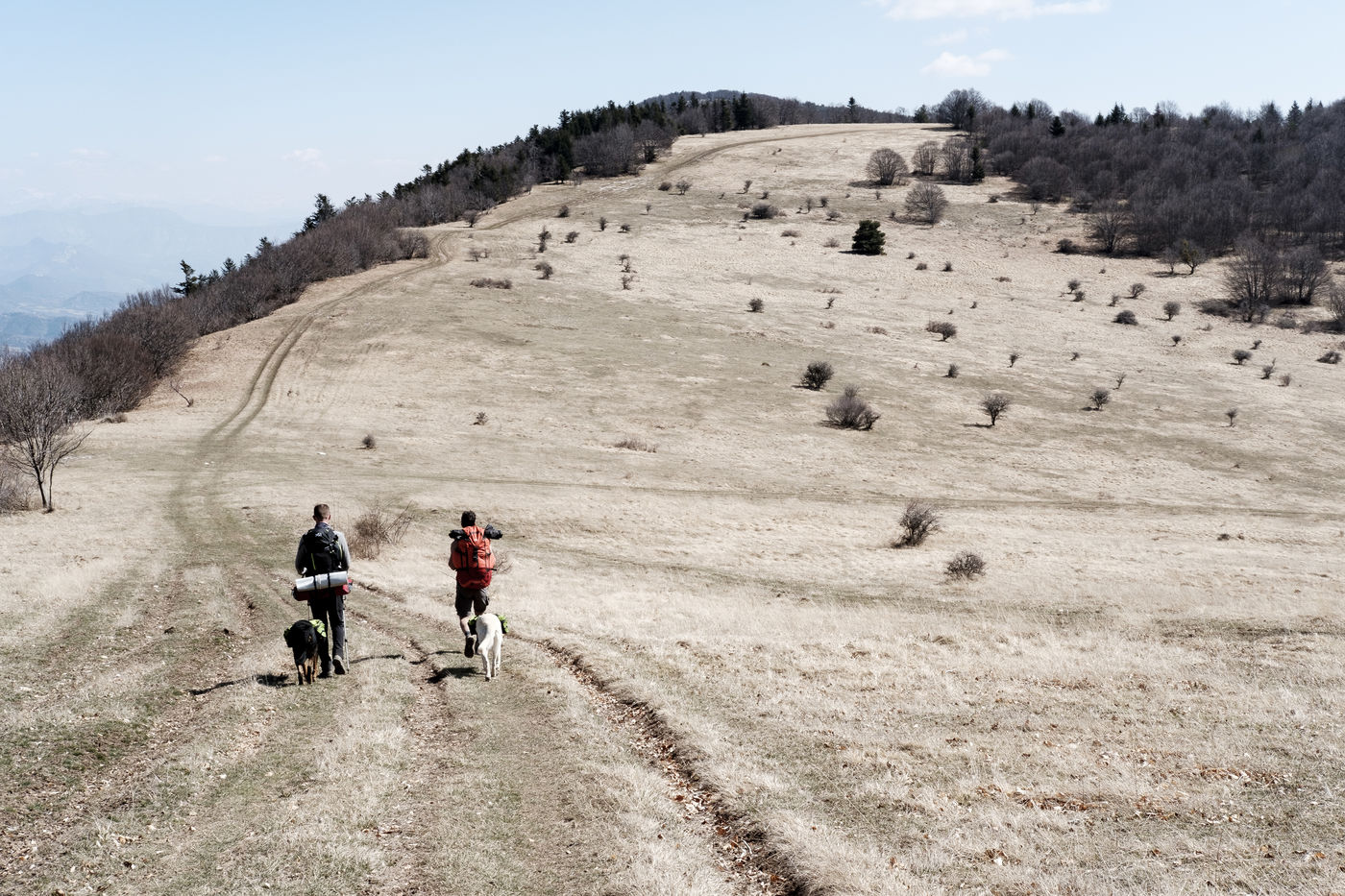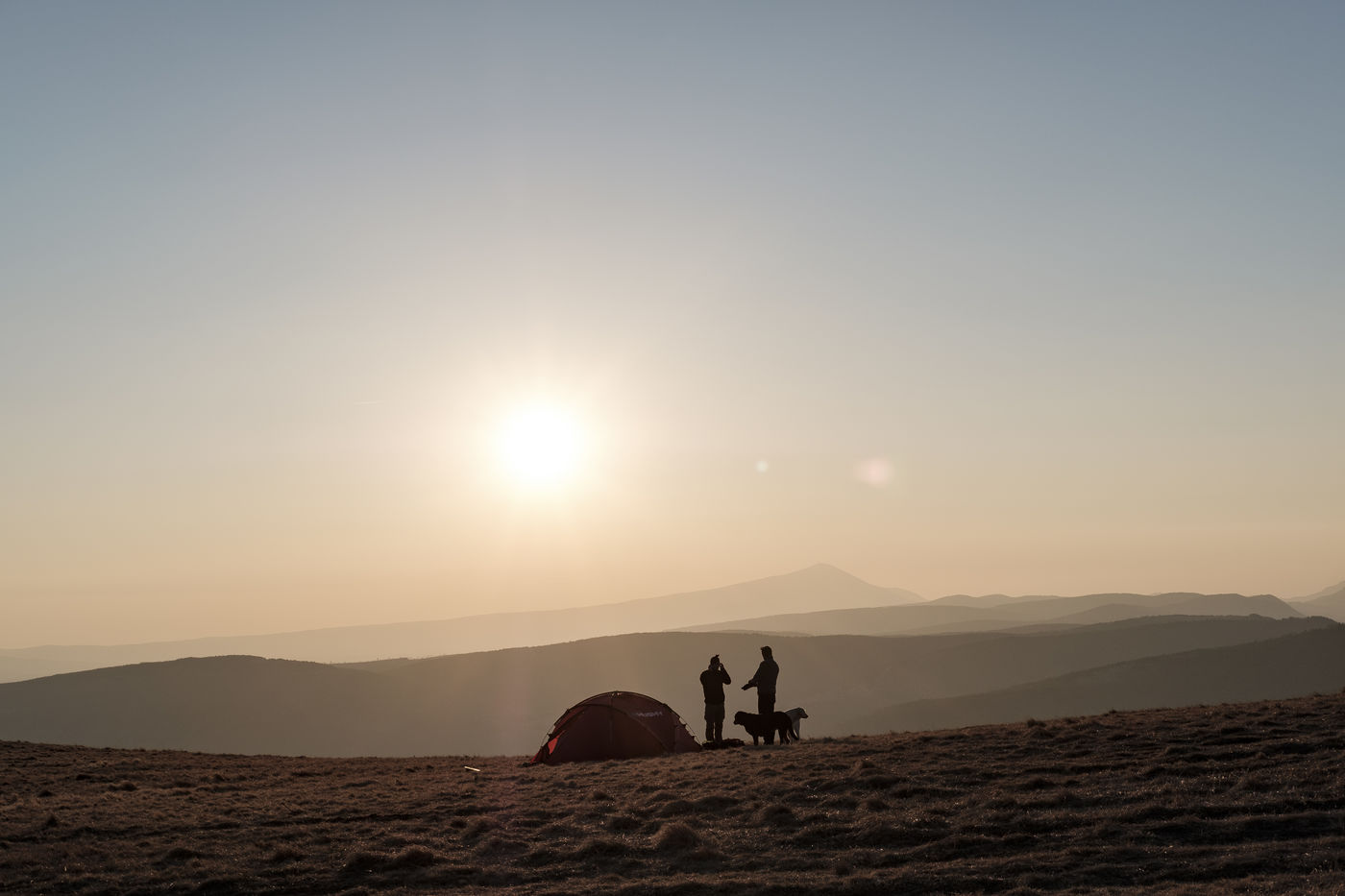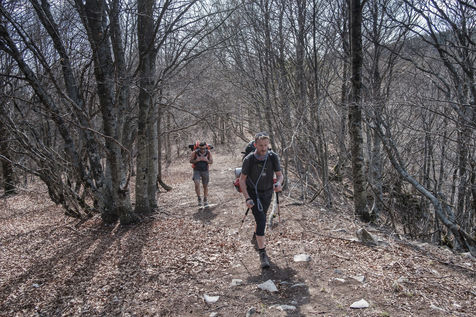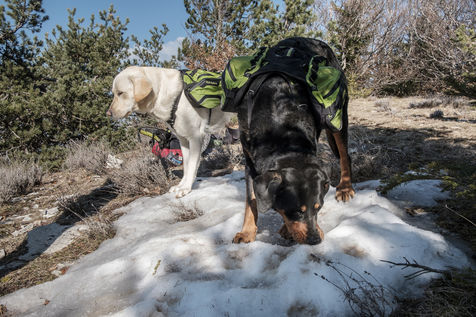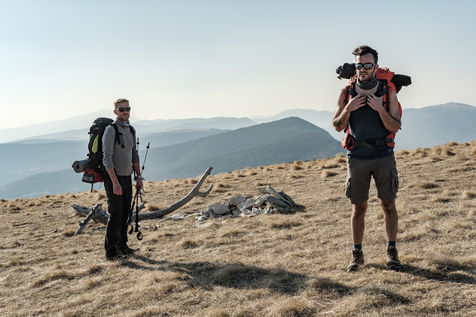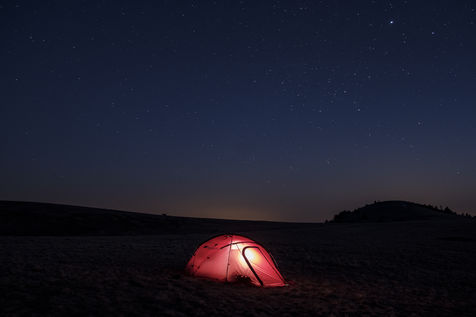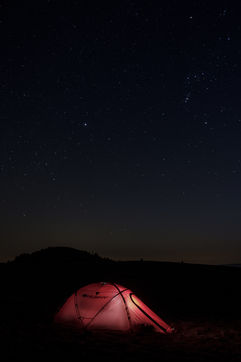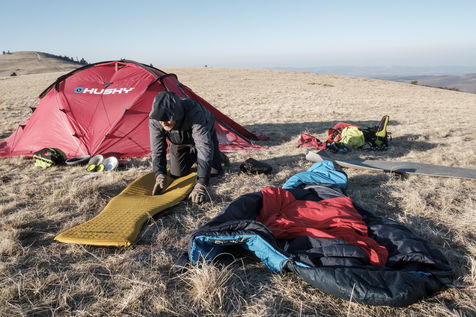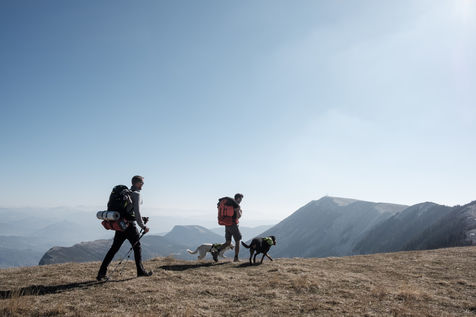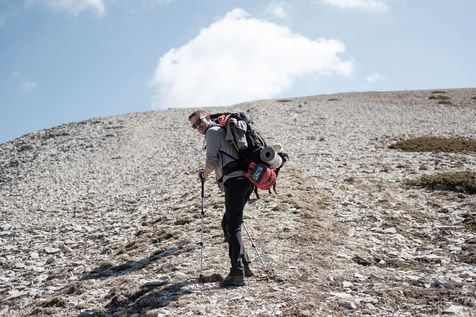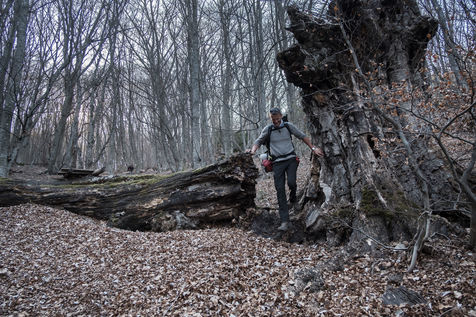Sur le fil
(...)
S'attaquer au chemin des crêtes, c'est affronter un itinéraire sur le fil, qui défie le randonneur. Les chemins qui traversent la montagne sont, comme souvent, des chemins de passage d'une vallée à une autre, du nord au sud. Passage de bêtes et des hommes il y a longtemps, ils se sont transformés en itinéraires de randonnée. Le chamois est le maître du versant nord, qui garde la neige plus longtemps au printemps. En été, les journées sont caniculaires et sèches.
Mais surtout, ici, il n'y a que trop peu d'eau. Les italiens du XIXe siècle et les bergers avaient construit des citernes, pour récupérer de l'eau de pluie. Peu d'entre elles subsistent, à côté des bergeries en ruine qui témoignent du passé pastoral du massif. Dans les combes se cachent quelques sources. Mais il n'y en a aucune sur le chemin des crêtes. Pour qui souhaite s'aventurer à les parcourir, peu de solutions : partir avec sa provision d'eau pour la totalité de la randonnée, ou faire une halte, à la fin de la première journée, à la station où se trouvent refuge et restaurant.
En choisissant de partir avec Nessi et Gaïa, deux chiens de berger, il fallait profiter de conditions particulières : plus de neige sur les hauteurs, mais pas encore de grosse chaleur et pouvoir emmener matériel et provision d'eau pour deux grosses journées de marche. Le sentier n'est pas toujours de tout repos : il emprunte parfois des GR et parfois de simples chemins forestiers avec un dénivelé assez raide. Si la différence entre point haut et point bas n'est pas si grande, les montées succèdent aux descentes dans une oscillation permanente avant d'accéder au sommet.
(...)
(Texte complet sur demande)
On a thread
(...)
To attack the path of the ridges is to face a route on the line, which challenges the hiker. The paths that cross the mountain are, as is often the case, paths from one valley to another, from north to south. Paths of animals and men a long time ago, they have been transformed into hiking routes. The chamois is the master of the north slope, which keeps the snow longer in spring. In summer, the days are hot and dry.
But above all, here, there is too little water. The 19th century Italians and shepherds had built cisterns to collect rainwater. Few of them remain, next to the ruined sheepfolds that bear witness to the pastoral history of the massif. In the valleys are hidden some sources. But there are none on the way to the ridges. For those who wish to venture out to explore them, there are few solutions: leave with your water supply for the entire hike, or stop at the end of the first day at the station where there is a refuge and restaurant.
By choosing to go with Nessi and Gaïa, two sheepdogs, we had to take advantage of special conditions: no more snow on the heights, but not yet very hot and be able to bring equipment and water for two big days of walking. The path is not always easy: it sometimes takes GR and sometimes simple forest paths with a rather steep gradient. If the difference between high and low point is not so great, the climbs follow the descents in a permanent oscillation before reaching the summit.
(...)
(Full text on request)


